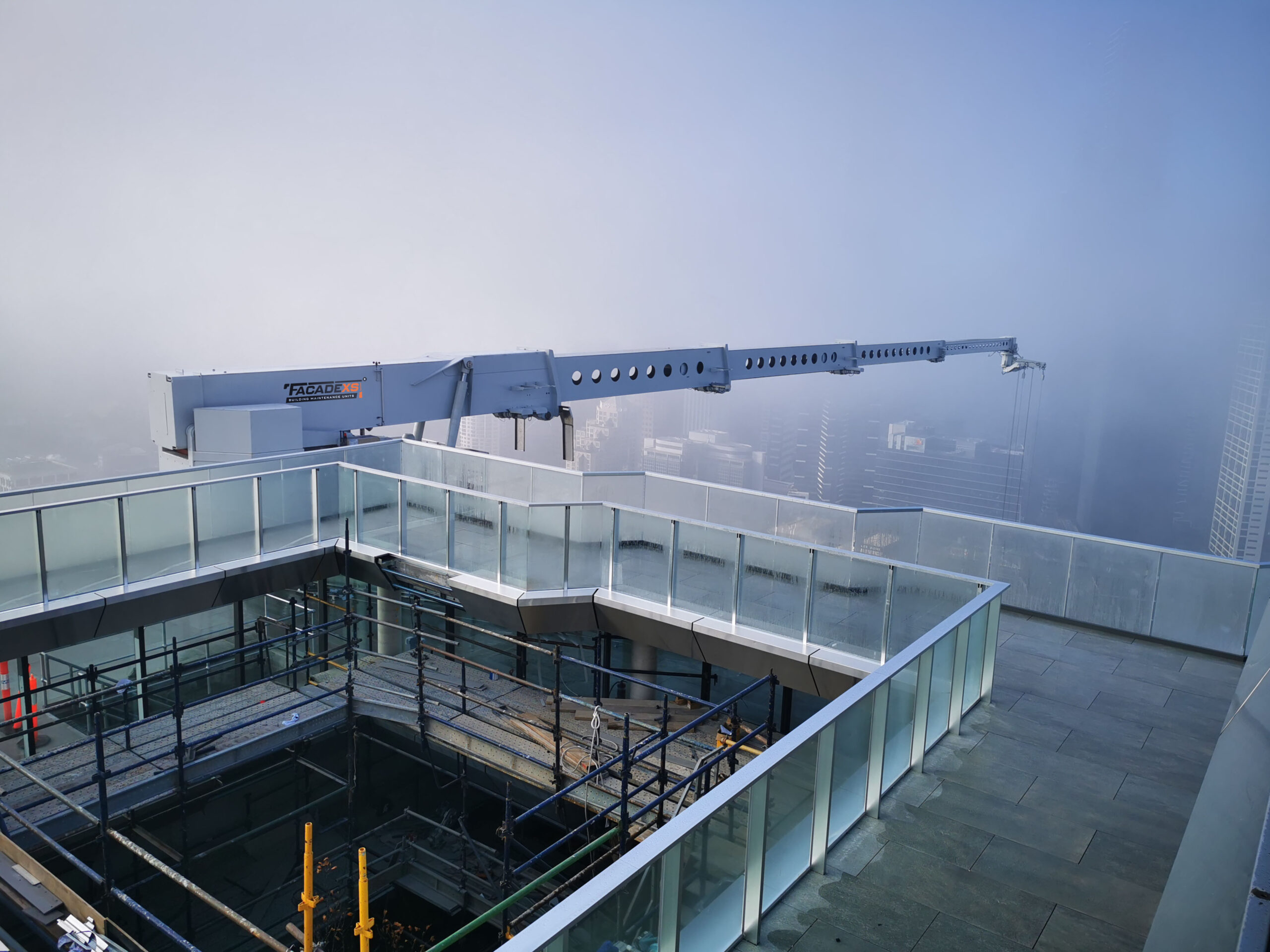Facades of buildings are getting more and more complex as architects get to realize their vision through innovative products, such as large curved glass panels, and the introduction of 3D modelling programs. Complex facades have organic shapes and curves, rounded edges, protruding or recessing elements, a sloping roof top or facade and so on.
To maintain these architectural delights facade access equipment has to be able to provide maximum movement in all necessary directions, depending on the complexity of the building’s facade.
In this blog we would like to provide information about the maneuverability of facade access equipment, also called Building Maintenance Units (BMU), to give an idea of the possibilities these solutions provide. Certain BMUs have multiple options for movement, others are more static in nature, this depends on the shape of the building. Most BMUs are custom designed for the customer’s and the project’s needs. After all, unique facades require innovative facade access solutions.
What capabilities do BMU’s have in terms of mobility
BMUs are permanently installed on a building or structure to provide easy and safe access to the facades for maintenance, inspections and cleaning.
There are a large variety of BMUs available as they are mostly designed specifically for a project. Some BMUs are static, some are equipped with a reverse osmosis system, while others have upgrades to replace broken or damaged glass panels. Let us dive a little deeper into the capabilities of a BMU, in terms of mobility.
Traversing roof car
BMUs are permanently installed on a building or structure to provide easy and safe access to the facades for maintenance, inspections and cleaning.
There are a large variety of BMUs available as they are mostly designed specifically for a project. Some BMUs are static, some are equipped with a reverse osmosis system, while others have upgrades to replace broken or damaged glass panels. Let us dive a little deeper into the capabilities of a BMU, in terms of mobility.

Telescopic Movement
A roof car can be equipped with a telescopic, extendable, jib and/or column. This is an especially suited solution for buildings where a long reach is necessary, but where the BMU parking area is limited. The column of a BMU can be made telescopic to provide the machine with more height to pass over obstructions. When the BMU is not in use the jib and/or column is retracted and thus takes up less space.
Luffing
Luffing is the movement of the jib that allows the cradle to come closer to the facade or to transfer the gondola over the parapet. This is an especially useful feature when a machine is close to the roof edge and the cradle has to be close to the facade at top level. The jib moves upward or downward to move the gondola closer or farther away. The advantage of a luffing jib is that the BMU can be parked relatively low compared to the parapet, hiding the machine from view.
Slewing Functions
Another solution to bring a cradle closer to the facade is a slewing, or rotating movement. There are two parts of the BMU that can produce this movement. Either the mast section of the BMU can turn around its axis, which allows the jib to position the gondola correctly.
Or the spreader bar, that holds the gondola, can produce the movement and turn the gondola to align with the facade. This is a handy feature for a slanting part of the facade. The rotating movement will also help get the BMU back into a parking position.

Gondola hoisting
The last movement that a BMU facilitates is the most obvious one, the vertical movement of the gondola. After all those in the gondola will have to be able to travel up and down the facade for maintenance.

